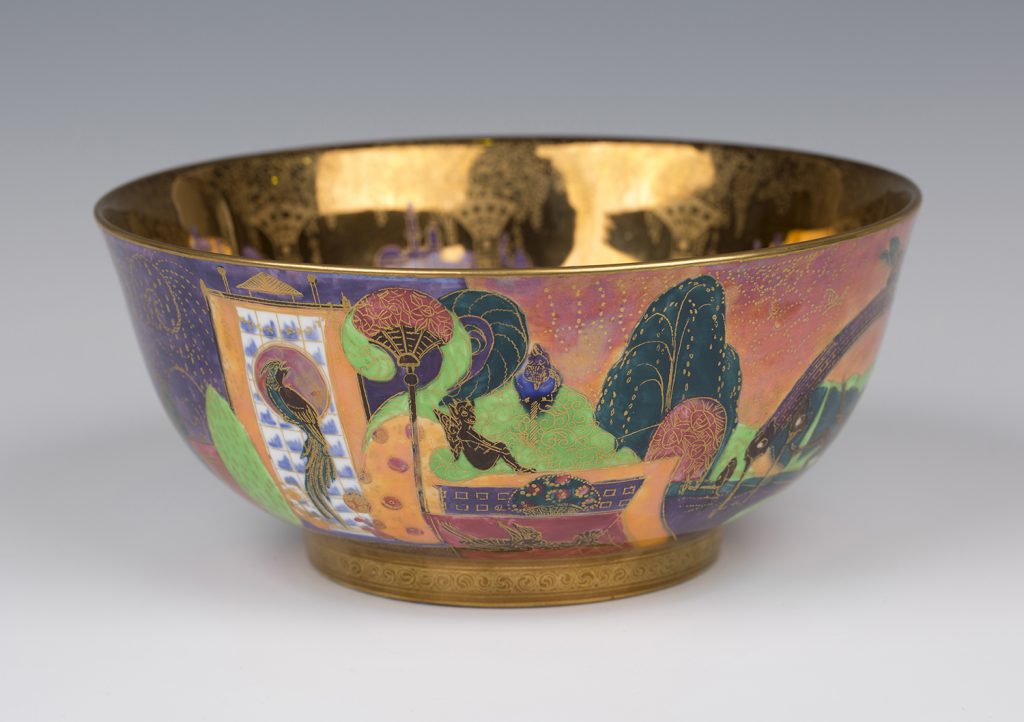
The ceramic designer Daisy Makeig-Jones was amongst a rising number of young middle-class women in the early 20th century who sought to break with the social mores of the time by working. Her designs would have an enormous influence on Wedgwood’s new lustre decoration and was she responsible for the revered Fairyland designs.
Daisy Makeig-Jones studied at the Torquay School of Art. A personal introduction by the Revd. Archibald Sorby to his friend Cecil Wedgwood led to her being employed at the Wedgwood factory. She trained for two years on the factory floor as a painter before joining John Goodwin’s design department. John Goodwin had been employed at Wedgwood as art director and brought his skills as a well organised and intelligent designer to the factory at a vital moment in the firm’s history.
Since medieval times lustre ceramics have caught the imaginations of collectors and people across Europe and the Middle East. Softly gleaming gold and pearly rainbows are captured in the potter’s glazes.
The manufacture of lustre wares at Wedgwood in the early 20th century employed new decorating processes. Daisy Makeig-Jones’ designs were engraved to allow their transfer to the objects. Underglaze painting, lustreing and gold printing followed. The lustre was prepared by a ceramic chemist in the form of a brown liquid which was quickly applied in wide sweeping brush stokes before being fired at a low temperature.
Initially the lustre designs included dragon, butterfly and bird motifs.
Daisy Makeig-Jones had delighted in the Colour Fairy Books edited by Andrew Lang in her childhood and these books became an important inspiration to her work. Building on the success of her Wedgwood lustre wares she began work on the Fairyland designs. The first of these was produced by Daisy at the end of 1915.

A multitude of designs followed with disparate individual titles and landscapes which often have an illogical dream like quality to them. There were, however, stylistic similarities and motifs which cross over and unite Daisy’s Fairyland designs. These include woodland elves’ fairies, goblins, gnomes, toadstools, spiders’ webs and trees. These can be seen on the richly decorated pair of vases and two bowls illustrated.
The Great Depression and era of austerity brought to a close the success of Daisy Makeig-Jones’ Fairyland lustre. Forced to retire she struggled to come to terms with the end of her remarkable career which had become so closely bound up with her life and identity.

Today collectors from across the world seek out Fairyland lustre designed by this gifted, influential and determined female ceramic designer. The pieces illustrated realised between £1700 and £7500 at Toovey’s auctions. The rarest examples can fetch tens of thousands today.
It is perhaps a fitting tribute to Daisy Makeig-Jones and her work that it is so highly respected.
By Rupert Toovey, a senior director of Toovey’s, the leading fine art auction house in West Sussex, based on the A24 at Washington. Originally published in the West Sussex Gazette.